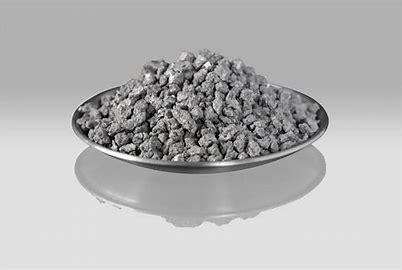Application, Market, and Prospects of Titanium Alloys
Titanium alloy refers to an alloy metal made from titanium and other metals. It was developed in the 1950s and belongs to the category of structural metals. Among them, high-temperature titanium alloys and structural titanium alloys in the aerospace field are more prominent. It was not until the 1970s that a batch of corrosion-resistant titanium alloys were developed. After the 1980s, corrosion-resistant titanium alloys and high-strength titanium alloys further developed, and titanium alloys began to show their skills in the aerospace field.
Due to the various characteristics of titanium alloys, they have broad application prospects in the field of new materials. As the types of titanium alloys vary, their characteristics also vary, including low density, high specific strength, low thermal conductivity, high temperature resistance, low temperature resistance, and corrosion resistance. And the two most important characteristics are high specific strength and good corrosion resistance.
These two prominent characteristics determine that titanium alloys have a wide range of applications in sea, land, air, and outer space, including aerospace, conventional weapons, naval and marine engineering, nuclear and thermal power generation, chemical and petrochemical, metallurgy, construction, transportation, sports equipment, and daily necessities. Spacecraft mainly utilize the high specific strength, corrosion resistance, and low-temperature resistance of titanium alloys to manufacture various pressure vessels, fuel storage tanks, fasteners, instrument straps, frameworks, and rocket shells. Artificial Earth satellites, lunar modules, manned spacecraft, and space shuttles also use titanium alloy plate welding components.
The preparation of titanium alloys generally involves three steps: heat treatment, cutting, deoxidation, and acid washing to produce preliminary titanium alloy products. However, from melting to the final product, titanium alloys generally require three steps: sponge titanium preparation, titanium material preparation, and titanium material application. The preparation technology of sponge titanium and titanium materials is complex and difficult, which is a difficult and key link in titanium manufacturing. To some extent, sponge titanium and titanium materials directly determine the quality of titanium alloy products. From the perspective of the entire industry chain, the core barrier to titanium alloys lies not in upstream resources and midstream smelting, but in the processing of titanium materials. The research and development and manufacturing process of high-end titanium materials are often concentrated in the hands of leading enterprises.
The current high-end titanium material processing mainly adopts vacuum white loss arc melting technology (VAR). The vacuum white arc melting technology simply means that the consumable electrodes produced in an induction furnace are heated and melted by a controllable AC arc in a vacuum or inert gas environment. This technology has very strict requirements for heat treatment technology and cutting process. Currently, only the United States, Russia, Japan, and China have complete knowledge of high-end titanium material processing technology.
The current market environment in China is characterized by a surplus of low-end titanium alloys, and the supply of high-end titanium alloys is struggling to keep up with demand. However, with the development and commercialization of titanium alloy application technology, low-end titanium alloys also have huge market development potential, and the low-end titanium material market is expected to self digest. In terms of volume, from 2013 to 2021, the sales and production of titanium materials in China have significantly increased, but domestic high-end titanium materials still rely on foreign imports.
Overall, China's titanium industry is in a growth period, characterized by a relatively fast market growth rate and demand growth rate. The industry model, technology, and barriers will gradually establish and stabilize.
Recommand products from TDD:
Rutile titanium dioxide HTR-616
polypropylene EP300K














